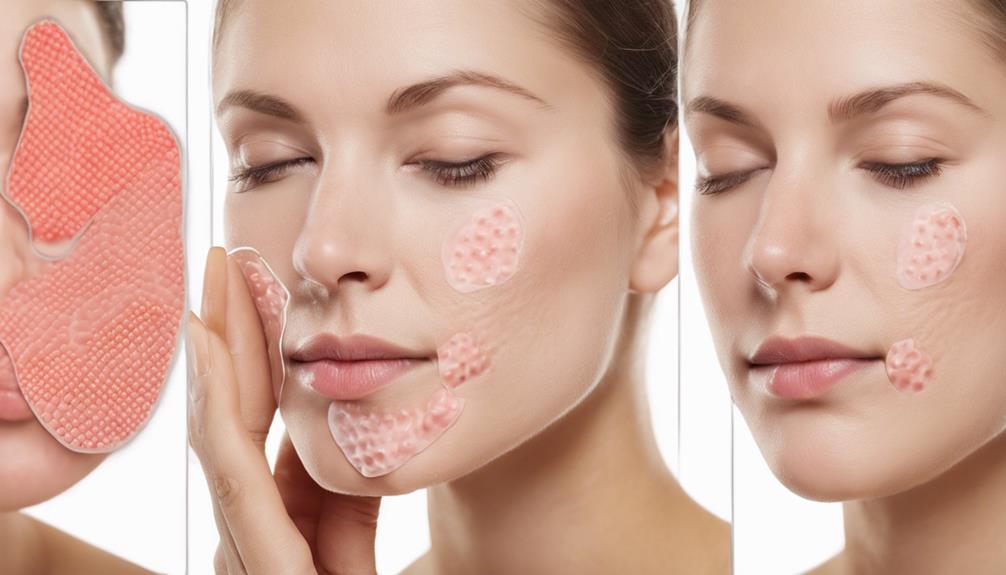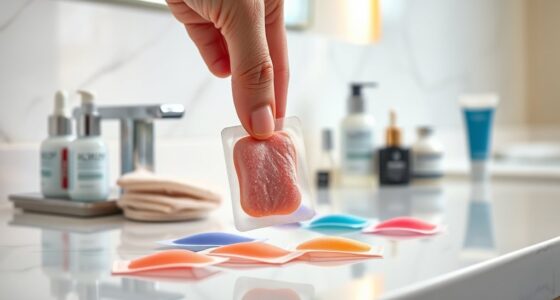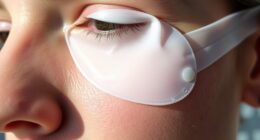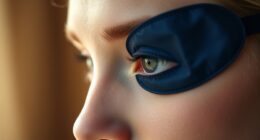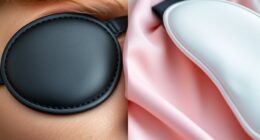You should keep your pimple patch on for about 6 to 8 hours for mild acne and whiteheads. For inflammatory acne, 4 to 8 hours is ideal, but it can stretch to 24 hours if necessary. Cystic acne patches can be worn for up to 24 hours. Always change the patch if it’s saturated or loses adhesion, and watch for any irritation. There’s a lot more to uncover about types and maintenance that can enhance your skincare routine.
Key Takeaways
- For mild acne, wear the patch for 6 to 8 hours, ideally overnight for optimal results.
- Inflammatory acne patches should be kept on for 4 to 8 hours, or up to 24 hours for severe cases.
- Whiteheads benefit from a patch duration of 6 to 8 hours for effective healing.
- Cystic acne patches can be used continuously for up to 24 hours for best results.
- Replace the patch if it becomes saturated or if you experience irritation or redness.
Understanding Pimple Patches and Their Functionality
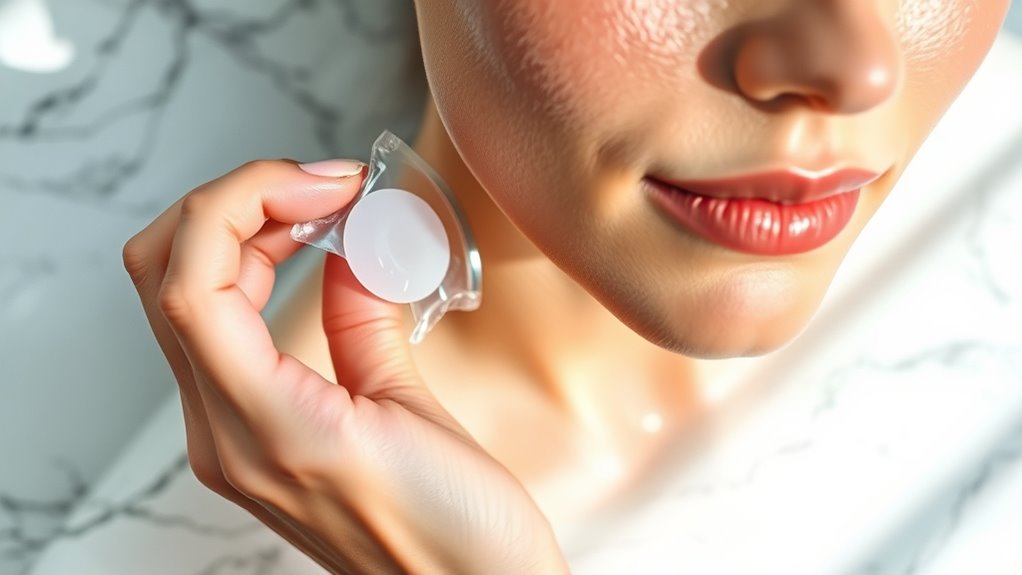
Pimple patches are innovative skincare solutions designed to tackle blemishes effectively. Made from hydrocolloid—a medical-grade material derived from gelatin or pectin—these patches form a protective barrier over your pimples. This barrier prevents external irritants and bacteria from worsening the blemish. Hydrocolloid patches absorb excess fluids like pus and oil, creating a clean environment that promotes healing. They adhere comfortably to your skin without additional taping, providing a flexible and breathable seal. Ideal for mild, superficial breakouts, they discourage touching or picking, reducing the risk of inflammation and scarring. Gentle on all skin types, pimple patches help improve your skin environment while shielding it from contaminants, making them a must-have in your skincare routine. Hands Off Protection is one of the primary benefits of using pimple patches, as it prevents further contamination while promoting faster healing.
Recommended Duration for Different Types of Acne
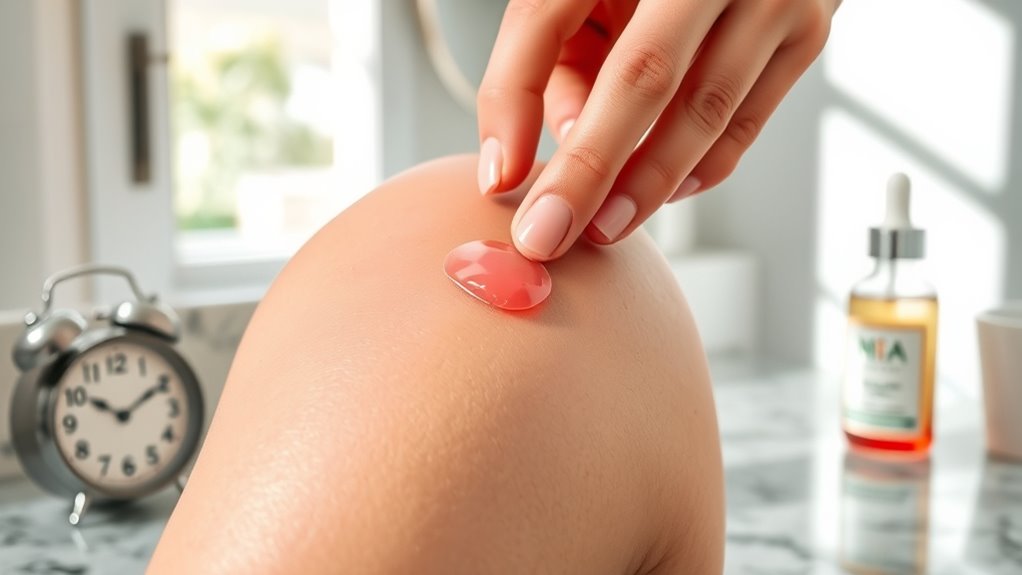
When you’re dealing with different types of acne, knowing how long to keep your pimple patch on can make a significant difference in your skin’s healing process.
For mild acne, wear your patch for 6 to 8 hours, often overnight for continuous treatment. Inflammatory acne typically requires 4 to 8 hours, but you can extend wear up to 24 hours for aggressive breakouts. This is because hydrocolloid technology creates a protective barrier that helps absorb excess oil and draw out impurities.
Whiteheads are best suited for patches worn 6 to 8 hours, while cystic acne might need up to 24 hours.
Always change your patch if it becomes saturated and follow up with a moisturizer after removal. Pay attention to how your skin reacts and adjust the duration as needed for best results.
The Benefits of Overnight Application
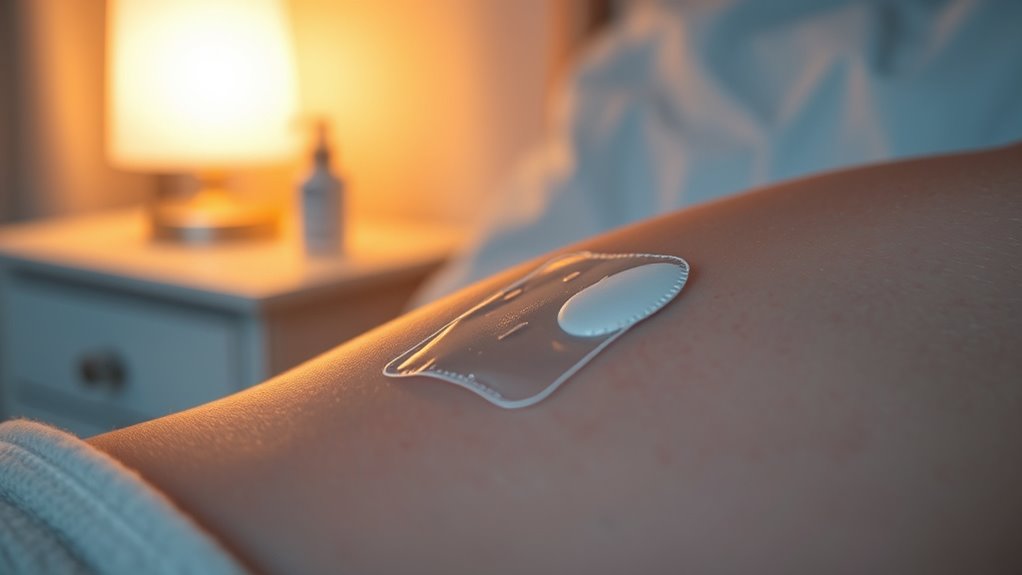
Applying pimple patches overnight can considerably enhance your skin’s healing process while you sleep. During this time, your skin naturally enters repair mode, allowing for faster healing. The patches reduce inflammation by minimizing exposure to bacteria and environmental irritants. Plus, they act as a barrier, preventing you from picking at your pimples, which lowers the risk of scarring and infection. A clean, dry face enhances patch effectiveness against bacteria. Overnight application also boosts absorption, effectively drawing out impurities like pus and oil. It’s a convenient treatment that lets you work on your skin while you rest.
Signs It’s Time to Remove Your Pimple Patch

After enjoying the benefits of overnight application, it’s important to know when to remove your pimple patch for ideal results.
Look for signs like patch saturation, where it turns white or opaque, indicating it’s absorbed maximum impurities. If the patch starts to peel off or loses adhesion, it’s time for a change. Always consider the elapsed time—typically, you should wear it for 6 to 12 hours. If you notice irritation or redness under the patch, remove it immediately. Additionally, leaving the patch on for the recommended duration allows for maximum hydrocolloid absorption, enhancing its effectiveness. Finally, if the hydrocolloid material has dried out completely, its effectiveness diminishes.
Watch for patch saturation—when it turns white or opaque, it’s time to change it for optimal results.
Remember to remove the patch gently from the edges, cleanse the area afterward, and moisturize to support healing!
Types of Pimple Patches and Their Uses

Understanding the different types of pimple patches can greatly enhance your acne treatment routine.
Hydrocolloid patches are great for drawing out excess oil and pus from pimples, while medicated patches infused with salicylic acid and tea tree oil target bacteria and inflammation. These patches are typically made of hydrocolloid, which is a gel-forming material that absorbs water and draws out fluid from the pimple. Additionally, using patches that contain essential oils can further enhance the antibacterial properties of the treatment. Studies suggest that astrological signs may influence personal confidence, which can indirectly affect how one perceives their skin and beauty. Essential oils like tea tree are known for their antibacterial properties, making them a valuable addition to your skincare routine.
If you’re dealing with deep, blind pimples, microneedling patches can deliver active ingredients deeper into the skin.
Some patches focus solely on anti-inflammatory or antibacterial ingredients, while multi-ingredient patches combine various actives for enhanced effectiveness.
Depending on your acne type, whether it’s papules or pustules, you can choose the right patch to address your specific needs, making your treatment more effective and convenient.
Tips for Optimal Application and Maintenance

To achieve the best results with pimple patches, you should focus on proper application and maintenance techniques.
Start by cleaning and drying your skin before placing the patch directly over the blemish. Make sure the patch fully covers the pimple for maximum effectiveness. Avoid touching or moving the patch during wear to prevent irritation. It’s important to remember that most patches are most effective when worn for 6 to 8 hours to allow for optimal absorption. Additionally, using patches made with hydrocolloid material can enhance moisture retention and healing.
Check the patch regularly; once it turns white or opaque, it’s time to replace it. For daytime use, opt for transparent patches for discretion.
Be mindful of your skin’s sensitivity, especially when extending wear. After removing the patch, don’t pick at the area to avoid scarring.
Pair your patches with a gentle skincare routine for enhanced healing and results.
Frequently Asked Questions
Can I Use Pimple Patches on Open Wounds?
Yes, you can use pimple patches on open wounds, especially if they’re from popped pimples.
These patches absorb excess fluid and create a barrier, promoting healing while preventing further irritation or infection.
Just make sure to clean the area before applying the patch for better adhesion.
Keep an eye on the patch; if it turns white or cloudy, it’s time to replace it to maintain its effectiveness.
Are Pimple Patches Safe for Sensitive Skin?
You might worry that pimple patches could irritate your sensitive skin, but many brands, like Neutrogena, offer gentle options.
These dermatologist-recommended patches are designed to protect and heal without causing further irritation. They form a moist environment that reduces inflammation and absorbs fluid from blemishes.
Just remember to apply them to clean, dry skin and remove them gently for the best results. Consistent use can help improve your skin’s appearance over time.
How Many Times Can I Reuse a Pimple Patch?
You can’t reuse a pimple patch. Each patch is designed for single use to guarantee effectiveness and hygiene.
Reusing them can spread bacteria, cause infections, and lead to skin irritation. Plus, a used patch loses its adhesive quality and won’t work properly.
For the best results, always apply a fresh patch to a clean area, allowing it to absorb impurities without reintroducing contaminants.
Stick to one-time use for clearer skin!
Can I Apply Makeup Over a Pimple Patch?
Picture yourself standing in front of the mirror, a pimple patch snugly on your skin, ready to conquer the day.
You can definitely apply makeup over that patch! Just guarantee your skin’s clean and dry first.
Gently dab on a matte concealer, blending it seamlessly. Keep your foundation light to avoid dislodging the patch.
With a spritz of setting spray, you’ll have the confidence to face the world while treating that pesky blemish!
Do Pimple Patches Expire or Lose Effectiveness Over Time?
Yes, pimple patches can expire and lose effectiveness over time.
If they’re expired, you risk skin irritation or infections, as the ingredients may degrade and bacteria can grow. Always check expiration dates and replace patches when they turn white or become saturated.
Proper storage helps maintain their potency, so keep them in a cool, dry place. By being mindful of these factors, you guarantee your patches work effectively when you need them most.
Conclusion
In the battle against blemishes, pimple patches are your trusty sidekick. Keeping them on for about six to eight hours typically yields the best results, especially overnight. Just remember to watch for signs that it’s time to remove them, like when the patch turns white. With the right application and care, you’ll be well on your way to clearer skin. So, gear up, stick on that patch, and let it work its magic while you sleep!


